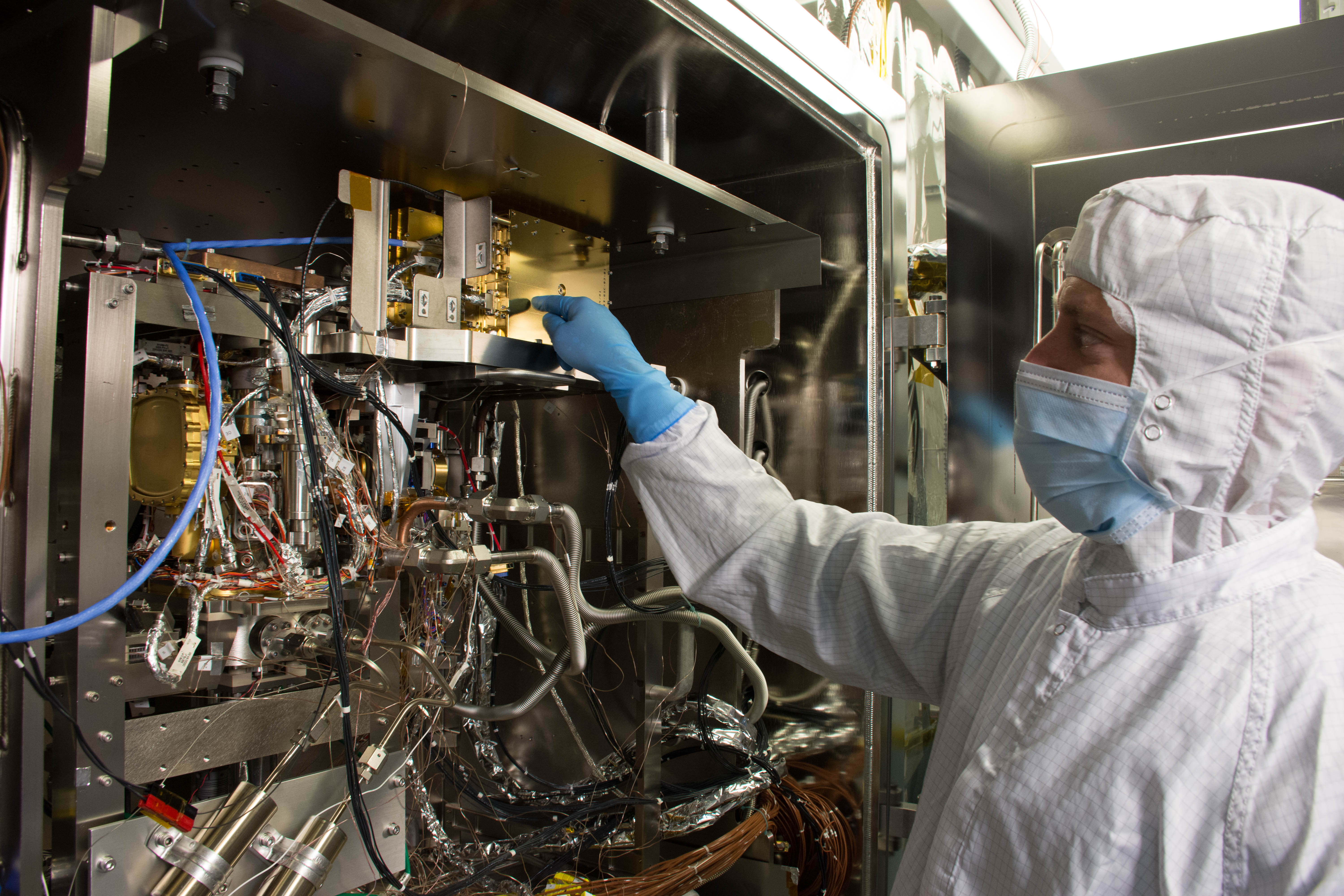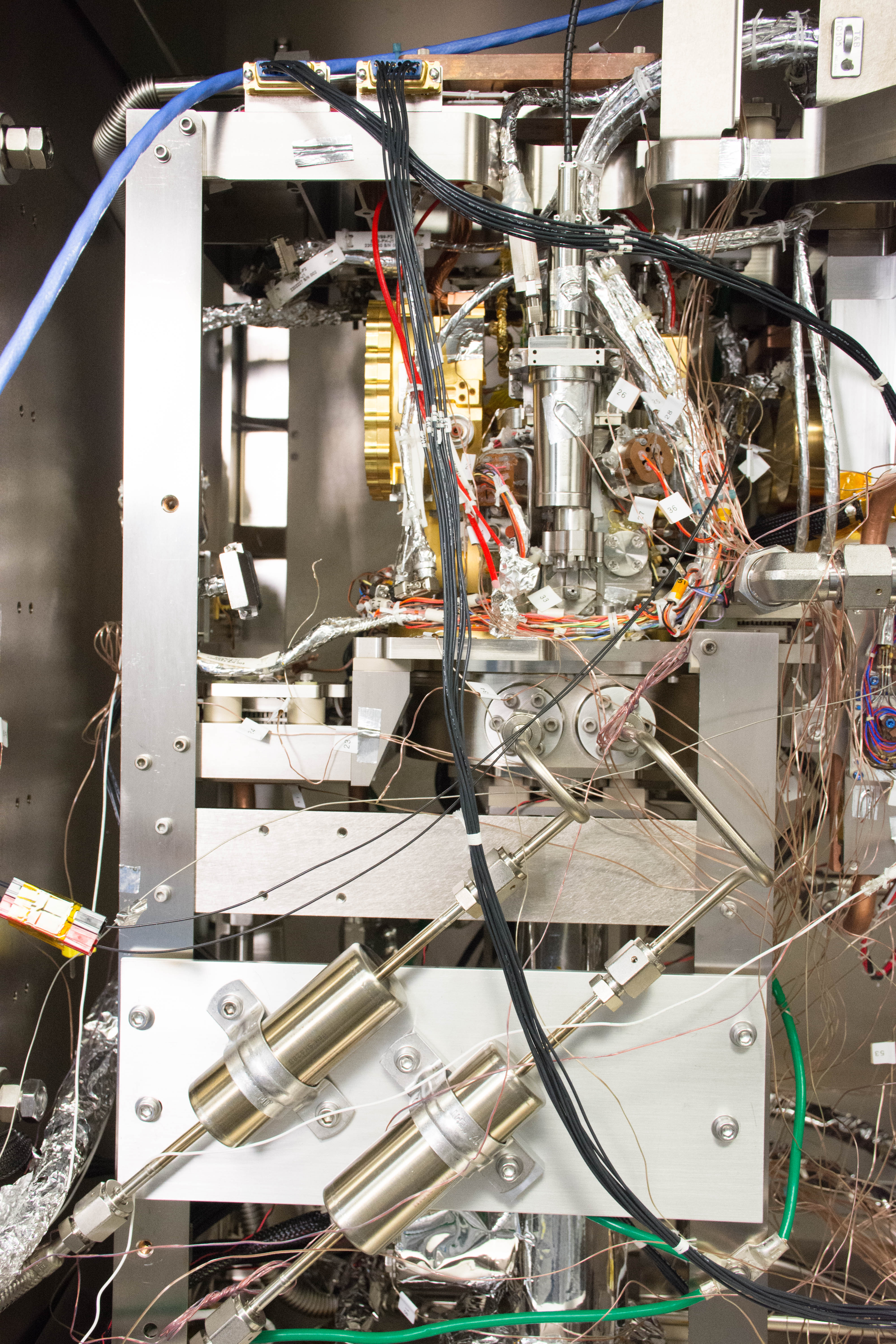New, Life-Hunting Organic Molecule Analyzer Set to Launch to Mars in 2020 (Video)
Europe's upcoming Mars rover features a powerful toaster-oven-size lab that will search for signs of life on the Red Planet.
The ExoMars rover is set to launch to Mars in July 2020, with a key instrument on board called the Mars Organic Molecule Analyzer (MOMA). Organic molecules are chemical compounds that contain carbon and hydrogen, and sometimes elements such as nitrogen or oxygen. Under some circumstances, these molecules are considered evidence of life, or at least point to its potential existence.
MOMA recently passed predelivery reviews at NASA and the European Space Agency, then was shipped to Thales Alenia Space in Turin, Italy, NASA's Goddard Space Flight Center said in a statement. NASA Goddard developed the mass spectrometer and electronics boxes for the instrument, with several international partners also participating in MOMA's development. [NASA May Have Discovered and Then Destroyed Organics on Mars in 1976]
Integration activities will take place in 2019, and the launch is scheduled for 2020 from the Baikonur Cosmodrome in Kazakhstan. NASA officials added that they are taking every step possible to avoid contaminating the MOMA instrument with Earth microbes, which was a concern for the NASA Curiosity rover ahead of its August 2012 arrival on Mars.

Searching for signatures of life
MOMA will serve as a miniature Mars research machine, including instruments that normally would occupy the area of a couple of workbenches, NASA stated. MOMA will analyze samples picked up by the ExoMars drill, which will drill up to 2 meters (6.5 feet) below the surface. There, sheltered from radiation and harsh weather on the Martian surface, life might have had a fighting chance.
"The ExoMars rover's two-meter deep drill will provide MOMA with unique samples that may contain complex organic compounds preserved from an ancient era, when life might have gotten started on Mars," Will Brinckerhoff, the MOMA project scientist at Goddard, said in the statement.
MOMA is designed to look for the chirality, or handedness, of organic molecules; like left and right hands on a human, some organic molecules have mirror-image twins. Earth's life-friendly amino acids are left-handed, and sugars (which help form proteins from amino acids, or DNA) are right-handed.
Get the Space.com Newsletter
Breaking space news, the latest updates on rocket launches, skywatching events and more!
"Life based on right-handed amino acids (and left-handed sugars) could work, but a mix of right- and left-handed for either will not. This is because these molecules need to come together with the correct orientation, like puzzle pieces, to build other molecules necessary for life to function," NASA said.
"MOMA is capable of detecting the chirality of organic molecules," NASA added. "If it finds an organic molecule is primarily of the left-hand or right-hand variety (called 'homochirality') that can be evidence that life produced the molecules, since non-biological processes tend to make an equal mix of varieties. This is known as a biosignature."

Ovens, lasers and traps
MOMA's mass spectrometer has two modes, according to a video by NASA Goddard posted on YouTube. In the gas-chromatograph mode, the rover inserts crushed Red Planet rocks into an oven, which is heated to about 900 degrees Celsius (1,650 degrees Fahrenheit). The vaporized sample flows into a long tube. The sides of this tube have a special coating that forces some types of molecules to slow down, which separates molecules by their chemistry.
The rover than emits electrons (negatively charged particles) to give the molecules an electric charge, which is called ionization. The ionized molecules move toward a linear ion trap. There, the ions get stuck in a fluctuating electric field. Then, they are moved into a detector to determine their chemical composition.
The other mode — never used before on Mars — is called laser desorption. It will allow MOMA to search for lipids, which are the building blocks of cell membranes; these are too delicate to survive the mass-spectrometer mode. In laser desorption mode, the sample is put underneath an ultraviolet laser, which vaporizes part of the sample. This process releases some organic molecules, which can be analyzed in MOMA's oven. The laser also ionizes other molecules that move toward the linear ion trap, where the rover analyzes their chemistry. Any remaining neutral molecules are ejected.
The linear ion trap is also a first for Red Planet exploration. It is designed to examine the chemical formula of molecules and whether that chemistry is similar to what's necessary for life. It searches for life's signatures in two modes. The first, called SWIFT, tosses out molecules deemed unworthy of inspection while other, more interesting molecules build up in the trap over time. The second technique — tandem mass spectrometer, or MS/MS — breaks large molecules into pieces and characterizes the smaller bits.
The ultimate goal for ExoMars is to better characterize whether Mars hosted ancient organisms, which complements the Curiosity rover's search for old, habitable environments. NASA is developing a follow-up mission to Curiosity called the Mars 2020 rover. Among its activities, the new NASA rover will cache samples for a possible sample-return mission to Earth in the coming decades.
Follow us @Spacedotcom, Facebook and Google+. Original article on Space.com.
Join our Space Forums to keep talking space on the latest missions, night sky and more! And if you have a news tip, correction or comment, let us know at: community@space.com.

Elizabeth Howell (she/her), Ph.D., was a staff writer in the spaceflight channel between 2022 and 2024 specializing in Canadian space news. She was contributing writer for Space.com for 10 years from 2012 to 2024. Elizabeth's reporting includes multiple exclusives with the White House, leading world coverage about a lost-and-found space tomato on the International Space Station, witnessing five human spaceflight launches on two continents, flying parabolic, working inside a spacesuit, and participating in a simulated Mars mission. Her latest book, "Why Am I Taller?" (ECW Press, 2022) is co-written with astronaut Dave Williams.









